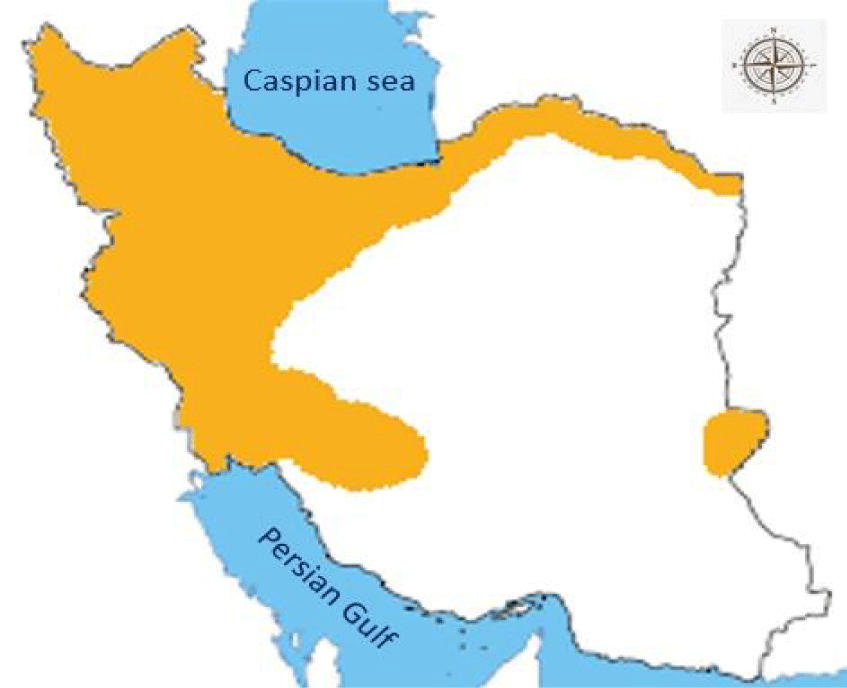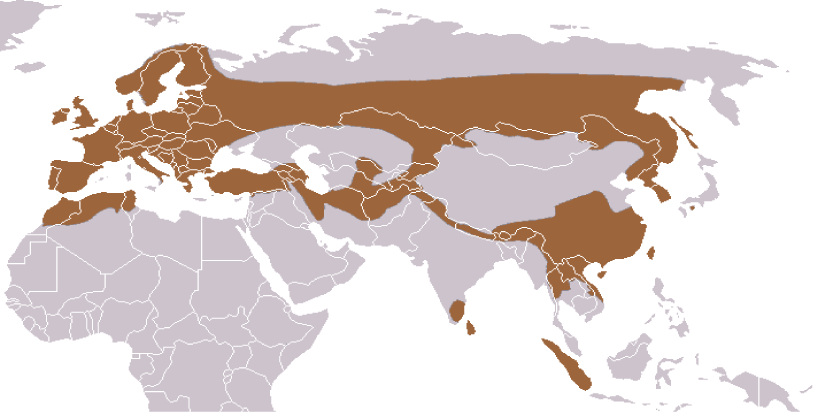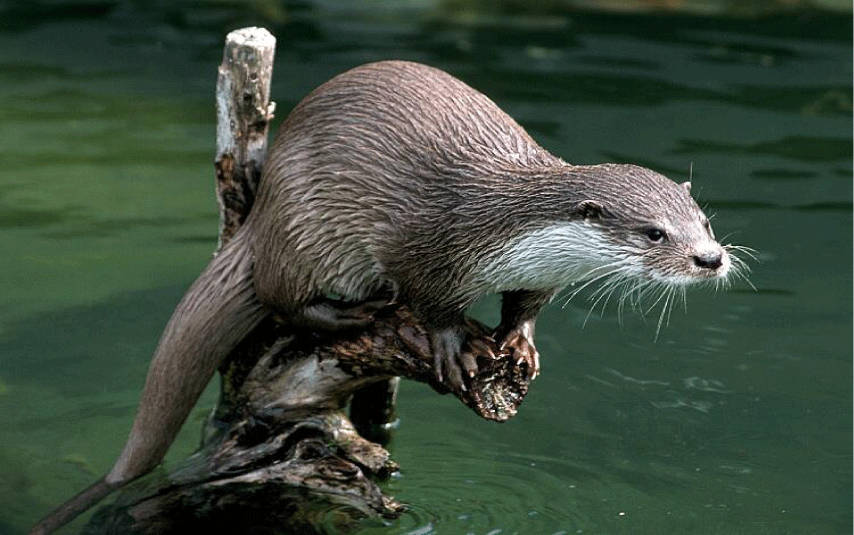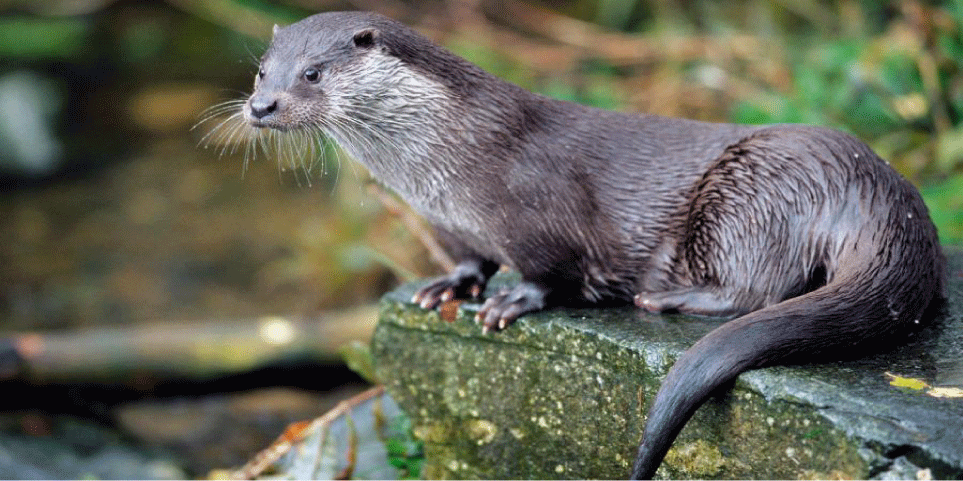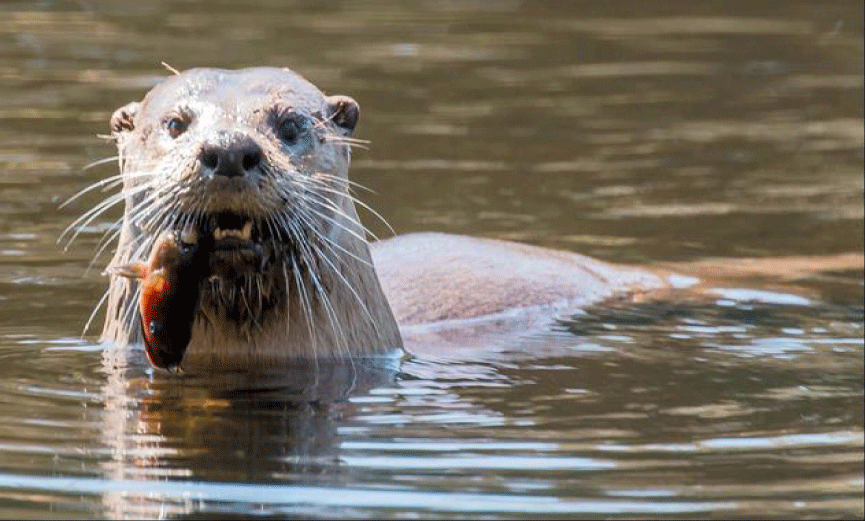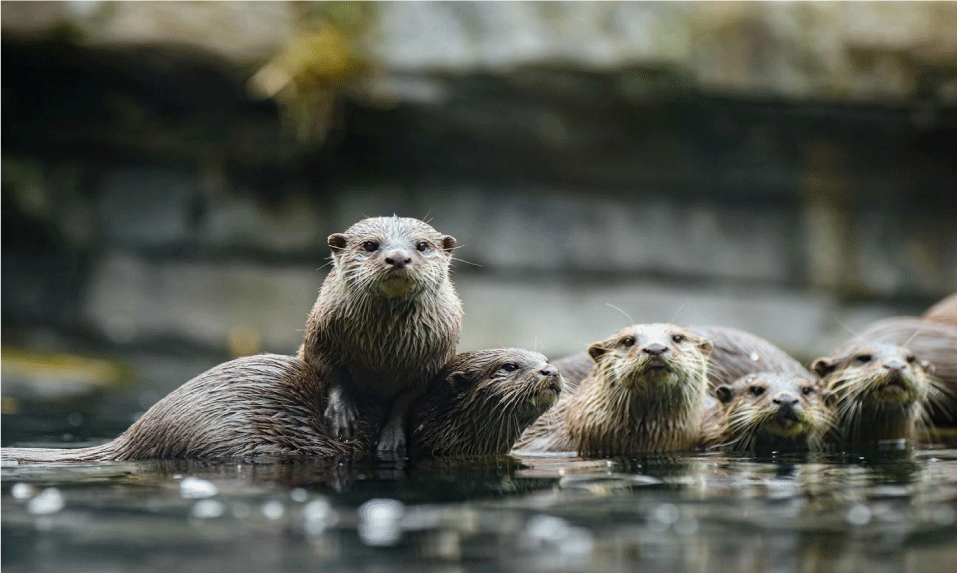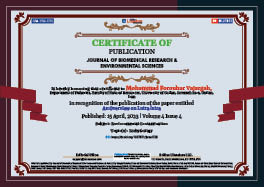Environmental Sciences . 2023 April 15;4(4):714-718. doi: 10.37871/jbres1728.
An Overview on Lutra lutra
Seyed Parsa Mousavi1, Mohammad Mahdi Ramzanipour1 and Mohammad Forouhar Vajargah2*
2Department of Fisheries, Faculty of Natural Resources, University of Guilan, Sowmeh Sara, Guilan, Iran
- Aquatic communities
- European otter
- Lutra lutra
Abstract
European Otter (Lutra lutra), is an aquatic and semi-aquatic animal from the carnivores and sub-family from Lutrinae of the Mustelidea family that lives alongside rivers and wetlands. Lutra lutra is an indicator species, and its loss somehow threatens human life, because one species is the head of the food chain and its loss is a sign of environmental degradation of other species. It has good distribution in Iran and the world, including Eurasia and North Africa. Lutra lutra has appearance characteristics such as a large body, cylindrical shape, a wide snout with long and thick mustaches, small ears and eyes, the tail is long and tubular, which at the base becomes wide and thick, the hands and feet are short and there is a curtain among the fingers, the hair is soft and dense, brown to brownish, under the chin and white throat. In recent years, widespread deaths have occurred in several aquatic mammal populations, which has reduced the population of Lutra lutra compared to the past. Due to various reasons such as loss of prey, indiscriminate hunting, contamination caused by agricultural pesticides, especially chlorine toxins, industrial pollution, and floods, its population is rapidly declining and has been totally destroyed in some areas.
Introduction
Miankaleh wetland is the habitat of near threatened species such as Lutra lutra and endangered species such as Phoca caspica. Lavandvill wildlife refuge is located in Astara city in Guilan province, which includes various aquatic and dry habitats for animals. 125 species of animals have been identified in the region, the most important of which are mammals such as Lutra lutra and Phoca capsica. Lutra lutra is the scientific name of the European Otter, an aquatic and semi-aquatic animal from the carnivores and sub-family from the Lutrinae of the Mustelidea family that lives alongside rivers and wetlands. The beast swims skillfully, is very playful, and becomes aggressive in times of danger. Lutra lutra is an indicator species, and its loss somehow threatens human life, because one species is the head of the food chain and its loss is a sign of environmental degradation of other species. The presence of this species has been reported in different regions of Iran such as Tehran, Guilan, Mazandaran, Gorgan, Isfahan, Fars, Khuzestan, Azerbaijan and Lorestan. Its habitat is around rivers, streams, irrigation canals, lakes, wetlands, and fish farming pools with suitable vegetation and its dispersion from Sistan to north Khorasan, Mazandaran to Azerbaijan, Kurdistan to Khuzestan, Fars, Chaharmahal, Isfahan and Tehran and its global spread, Europe, North Africa, Asia [1].
Aquatic mammal due to their position at the top of the food chain, aquatic mammals have the potential to deposit heavy metals and trace elements in their tissues. In recent years, widespread deaths have occurred in several populations of aquatic mammals [2,3]. Hence, there are some concerns about side effects caused by the effect of trace elements and their accumulation in marine mammals [4,5]. Miankaleh wildlife refuge is located in the central part of Miankaleh wetland, which is located southeast of the Caspian Sea and connects to the Caspian Sea by a narrow channel from its northeast end. The Caspian Sea is the largest lake in the world [6-8]. Which is restricted from the south to Iran, to the north to Russia, to the west to Russia and the Republic of Azerbaijan, and to the republics of Turkmenistan and Kazakhstan in the east. About 130 rivers flow into the sea, most of which join the sea from the northwest [9,10]. The largest is the Volga River, which enters the Caspian Sea with an average of 241 cubic kilometers of water each year [11-13] The closed nature of the Caspian has made it a unique habitat for animals and plants, but at the same time makes it very vulnerable to agricultural, industrial and oil pollution [14,15].
Distribution of Lutra lutra Iran
As mentioned above, the presence of this animal has been reported in the regions of Sistan to the north of Khorasan, Mazandaran to Azerbaijan, Kurdistan to Khuzestan, Fars, Chaharmahal, Isfahan, Tehran, and Lorestan (Figure 1).
Distribution of Lutra lutra in the world
The Lutra lutra is the most widely distributed otter species, its range including parts of Asia and northern Africa, as well as being spread across Europe, south to Palestine. Though currently thought to be extinct in Liechtenstein and Switzerland, it is now common in Latvia, along the coast of Norway, in the western regions of Spain and Portugal, and across Great Britain and Ireland. In Italy, it lives in the southern parts of the peninsula [16]. In Syria, the Eurasian otter was recorded in montane creeks in Latakia and Raqqa Governorates and in the lower Euphrates valley in Deir ez-Zor Governorate [17]. In western Nepal, its presence was documented at elevations of around 1,600 m (5,200 ft) in Barekot River in Jajarkot District and at 1,337 m (4,386 ft) in Tubang River in Eastern Rukum District [18]. In India, it is distributed in the Himalayan foothills, southern Western Ghats, and the central Indian landscape [19] (Figure 2).
Classification
Table 1 illustrates the classification.
Specifications
It has a large body, cylindrical shape, a wide snout with long and thick mustaches, small ears and eyes, the tail is long and tubular, which at the base becomes wide and thick, the hands and feet are short and there is a curtain among the fingers, the hair is soft and dense, brown to brownish, under the chin and white throat (Figure 3).
Sizes: The sizes are head and trunk length 62 to 83 cm, tail 36 to 55 cm, height 30 cm, and weight 5 to 15 kg.
Habitat: The Otter prefers shallow, narrow areas of streams surrounded by mature trees and with rocks [20], around rivers, streams, irrigation canals, lakes, wetlands, and fish farming pools with suitable vegetation (Figure 4).
Habits: Lutra lutra is a night animal that operates day and night if it sees the area safely. They live individually and nest in natural holes in rocks, holes in trees, and under the roots of trees by the water. The nest entrance door is usually located in the water and at a depth of 50 centimeters above the water surface, which is connected to the nest by a sloping corridor, a ventilation hole connects the nest outwards. Sometimes inside the nest. In addition to the permanent nest, it may also have a temporary nest under the rocks and plants. He walks well on the ground, but no more than a few hundred meters away from his nest. With perfect skill, he swims and dives by the tail and with the help of his legs. To balance, the hands stick to the chest and act like commands. It can remain underwater for 10 minutes, but under normal conditions, the time to go underwater is one to two minutes. The underwater, holes in the ears and the head are blocked. Mustaches are very sensitive and use them in darkness or muddy water to swim well and feel turbulence in the water. The sense of smell and hearing is strong, the vision is relatively weak, but underwater and in the lights of your brain. They walk kilometers on land to access new food supplies. They are well educated; in some countries, they train these animals for fishing [8].
Food: European Otters feed on aquatic animals such as fish, frogs, crabs, small mammals such as veal, aquatic birds especially coots, ducks, eggs and chickens, insects, and plant materials. It takes food by mouth. The traces of feces and food residues are seen in certain areas of rivers and streams indicating the presence of this animal in the region. Inside the stool that smells like fish, there are usually fish bones (Figure 5).
Reproduction
Mating is able in all seasons, but mating is usually done in winter. The pregnancy lasts about two months. One to five babies are born in each pregnancy. Children's eyes open at one month of age. After two months, they leave the nest and start swimming. They depend on their mother until they're six months old. They reach puberty at one year of age. The lifespan in captivity is about 22 years [6] (Figure 6).
Current status of the species
Due to various reasons such as loss of prey, indiscriminate hunting, and contamination caused by agricultural pesticides, especially chlorine toxins, industrial pollution and floods, its population is rapidly declining and has been totally destroyed in some areas. By the late 1960s, thousands of pieces of the animal's skin, which had been hunted in different parts of the country, especially around Khuzestan Rivers and wetlands, were exported abroad. Currently, the highest population of Lutra lutra is observed in wetlands and rivers in the north and west of the country, but in southern regions, especially Khuzestan wetlands such as Hour AlAzim and Shadegan, its population has been greatly reduced. Lutra lutra is an indicator species, and its loss somehow threatens human life, because one species is the head of the food chain and its loss is a sign of environmental degradation of other species. Some fish farms in Iran deliberately open up the outlet of water from which dirty and excess water comes out so that Lutra lutra can come to eat the baby fish that comes out with this water and then they kill the animal for its precious skin [9].
One of the methods of catching this species used by hunters is pouring chlorine into the water. The bodies of the fish and Lutra lutra would come over the water. European Otter’s nest hole is not normally visible and is enclosed between the grasses. Overgrazing of livestock also causes the loss of vegetation of river cover and loss of refuge for the animal and is more susceptible to predators. Creating stress and noise, noise pollution, and allowing tourists to access the area who come to the river bank in addition to disturbing the safety of the animal's life, unfortunately, leaving all kinds of waste in the environment. The effect of the road on disrupting the life balance of this animal is quite evident and can be easily proved even with statistical equations. Unfortunately, this species is currently on the Red Book List of the World Union for Conservation of Nature (I.U.C.N) Medicine.
References
- Noda K, Ichihashi H, Loughlin TR, Baba N, Kiyota M, Tatsukawa R. Distribution of heavy metals in muscle, liver and kidney of northern fur seal (Callorhinus ursinus) caught off Sanriku, Japan and from the Pribilof Islands, Alaska. Environ Pollut. 1995;90(1):51-9. doi: 10.1016/0269-7491(94)00089-v. PMID: 15091500.
- Ross P, De Swart R, Addison R, Van Loveren H, Vos J, Osterhaus A. Contaminant-induced immunotoxicity in harbour seals: wildlife at risk? Toxicology. 1996 Aug 16;112(2):157-69. doi: 10.1016/0300-483x(96)03396-3. PMID: 8814345.
- Vajargah MF, Hossaini SA, Niazie EHN, Hedayati A, Vesaghi MJ. Acute toxicity of two pesticides diazinon and deltamethrin on tench (Tinca tinca) larvae and fingerling. International Journal of Aquatic Biology. 2013;1(3):138-142. doi: 10.22034/ijab.v1i3.64.
- Miyazaki N. A review of studies on the ringed, Caspian, and Baikal seals (Pusa hispida, P. caspica, and P. sibirica). Otsuchi Mar Sci. 2001;26:1-6.
- Vajargah MF, Yalsuyi AM, Hedayati A. Acute toxicity of povidone-iodine (Betadine) in common carp (Cyprinus carpio L. 1758). Pollution. 2017;3(4):589-593. doi: 10.22059/POLL.2017.62775.
- Sattari M, Bibak M, Bakhshalizadeh S, Vajargah MF. Element accumulations in liver and kidney tissues of some bony fish species in the Southwest Caspian Sea. Journal of Cell and Molecular Research. 2020;12(1):33-40. doi: 10.22067/jcmr.v12i1.85975.
- Sattari M, Bibak M, Vajargah MF, Faggio C. Trace and major elements in muscle and liver tissues of Alosa braschnikowy from the South Caspian Sea and potential human health risk assessment. Journal of Materials and Environmental Science. 2020;11(7):1129-1140.
- Vajargah MF, Hedayati A. Acute toxicity of butachlor to Rutilus caspicus and Sander lucioperca in vivo condition. Transylvanian Review of Systematical and Ecological Research. 2017;19(3):85-92. doi: 10.1515/trser-2017-0023.
- Vajargah MF, Yalsuyi AM, Hedayati A. Effects of dietary kemin multi-enzyme on survival rate of common carp (Cyprinus carpio) exposed to abamectin. Iranian Journal of Fisheries Sciences. 2018;17(3):564-572. doi: 10.22092/IJFS.2018.116494.
- Hajiahmadian M, Vajargah MF, Farsani HG, Chorchi MM. Effect of Spirulina platensis meal as feed additive on growth performance and survival rate in golden barb fish, Punius gelius (Hamilton, 1822). Journal of Fisheries International. 2012;7(3):61-64.
- Vajargah MF, Hedayati A. Acute toxicity of trichlorofon on four viviparous fish: Poecilia latipinna, Poecilia reticulata, Gambusia holbrooki and Xiphophorus helleri (Cyprinodontiformes: Poeciliidae). Journal of Coastal Life Medicine. 2014;2(7):511-514. doi: 10.12980/JCLM.2.2014J11.
- Sattari M, Namin JI, Bibak M, Vajargah MF, Hedayati A, Khosravi A, Mazareiy MH. Morphological comparison of western and eastern populations of Caspian kutum, Rutilus kutum (Kamensky, 1901) (Cyprinidae) in the Southern Caspian Sea. International Journal of Aquatic Biology. 2018;6(4):242-247. doi: 10.22034/ijab.v6i4.529.
- Vajargah MF, Hedayati A. Toxicity effects of cadmium in grass carp (Ctenopharyngodon idella) and big head carp (Hypophthalmichthys nobilis). Transylvanian Review of Systematical and Ecological Research. 2017;19(1):43-48. doi: 10.1515/trser-2017-0004.
- Chorehi MM, Ghaffari H, Hossaini SA, Niazie EHN, Vajargah MF, Hedayati A. Acute toxicity of diazinon to the Caspian vimba, Vimba vimba persa (Cypriniformes: Cyprinidae). International Journal of Aquatic Biology. 2013;1(6): 254-257. doi: 10.22034/ijab.v1i6.140.
- Vajargah MF, Hossaini SA, Hedayati A. Acute toxicity test of two pesticides diazinon and deltamethrin on spirlin (Alburnoides bipunctatus) larvae and fingerling. Journal of Toxicology and Environmental Health Sciences. 2013;5(6):106-110. doi: 10.5897/JTEHS2013.0270.
- Roos A, Loy A, Savage M, Kranz A. Lutra lutra. IUCN Red List of Threatened Species. 2021. doi: 10.2305/IUCN.UK.2021-3.RLTS.T12419A164578163.en.
- Aidek A, Baddour FS, Ibrahim NN, Al-Sheikhly OF. The first photographic records of the eurasian otter Lutra lutra in Syria: Its mysterious occurrence is revealed. IUCN Otter Specialist Group Bulletin. 2021;38(5):258-266.
- Shrestha MB, Shrestha G, Reule S, Oli S, Ghartimagar TB, Singh G, Tripathi DM, Law CJ, Shah KB, Savage M. First evidence of eurasian otter in Nepal in three decades. IUCN Otter Specialist Group Bulletin. 2021;38:(5):279-291.
- Joshi AS, Tumsare VM, Nagar AK, Mishra AK, Pariwakam MP. Photographic records of Eurasian otter Lutra lutra from the Central Indian landscape. IUCN Otter Specialist Group Bulletin. 2016;33(1):73-78.
- Sun CH, Hee CK, Don LS, Seuk PY. Characterizing habitat preference of Eurasian river otter (Lutra lutra) in streams using a self-organizing map. Limnology. 2009;10(3):203. doi: 10.1007/s10201-009-0275-7.
Content Alerts
SignUp to our
Content alerts.
 This work is licensed under a Creative Commons Attribution 4.0 International License.
This work is licensed under a Creative Commons Attribution 4.0 International License.





